A Swiss wine village experiments with solutions to water scarcity
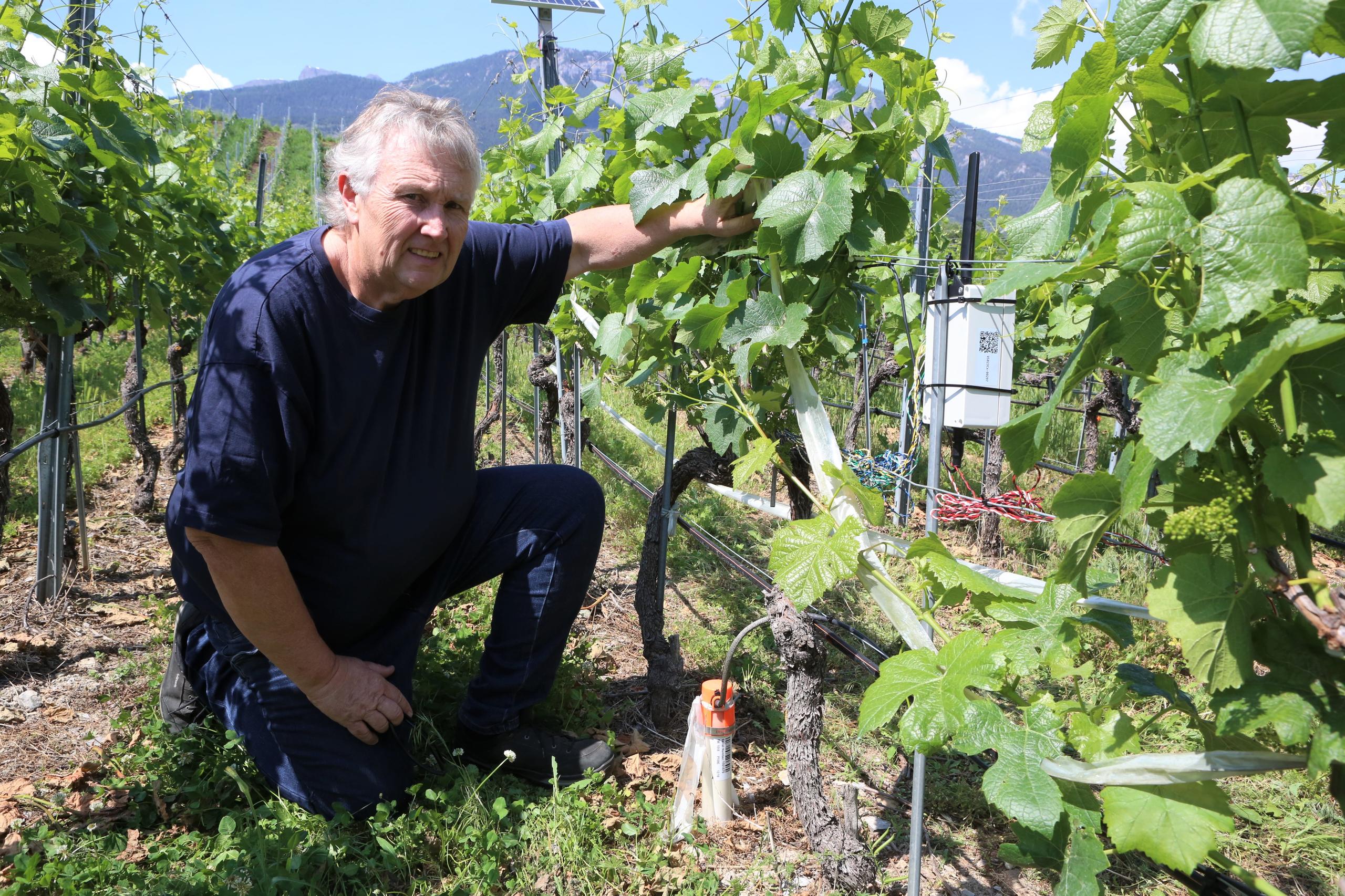
The melting of a glacier has deprived the village of Salgesch in canton Valais of an important source of water during the summer. Residents now rely on technology to reduce by nearly half the amount of water used to irrigate their vineyards – a project that could inspire other drought-prone regions around the world.
On a walk from the train station to the church square, the main economic activity of Salgesch becomes immediately clear. On both sides of the main street, signs depicting grapes invite visitors to taste wine in one of the 27 wineries nearby.
But the vineyards that have brought fortune to this village at the foot of the Alps in southwestern Switzerland are under threat. In summer, the water that comes down from the mountains has become increasingly scarce. Salgesch often has to rely on water supplies from neighbouring municipalities to irrigate its more than 200 hectares of vineyards.
Water is becoming scarce in many parts of the world. Even Switzerland, which holds much of Europe’s water, must rethink its management and prepare for increasingly frequent droughts. This series explores potential conflicts related to water consumption and solutions for better management of the precious resource.
The situation is unsustainable. “We have had droughts before, but in general we had enough water – we didn’t have to worry about how to allocate it,” says Harald Glenz, water manager for the municipality of Salgesch. “Now there is a lot less water, and so we have to organise [ourselves] more efficiently.”
The municipality has embarked on a project it deems revolutionary: collecting and storing snowmelt water and experimenting with a new irrigation system that could reduce water consumption by more than 40%.

Water from mountain river dries up
Glenz leads me to the heights of Salgesch to understand the source of the problem.
After a few kilometres on a narrow, winding road, we reach a bridge crossing a stream. This is the Raspille, the river that marks the border between German-speaking Upper Valais and French-speaking Lower Valais. Here, at an elevation of about 1,000m, the water is tapped to irrigate the vineyards and other crops in Salgesch.
The Raspille is fed by melting snow. Until about 15 years ago it also collected meltwater from the Plaine Morte glacierExternal link, located almost 2,000m higher up. The glacier provided some runoff and water for agriculture for much of the summer. As the glacier recedes, however, the water flows mainly to the neighbouring canton of Bern, leaving the Valais side almost dry. In addition, due to climate change, less and less snow is falling in the mountains. As a result, the Raspille is drying out sooner in the year than it should.
>> Watch this animation to see the retreat of the Plaine Morte glacier:
On this June day, thanks to the melting of the snow that fell in the spring, there is still plenty of water in the Raspille. But if there is no rain, the river could run dry before the end of July, Glenz predicts.
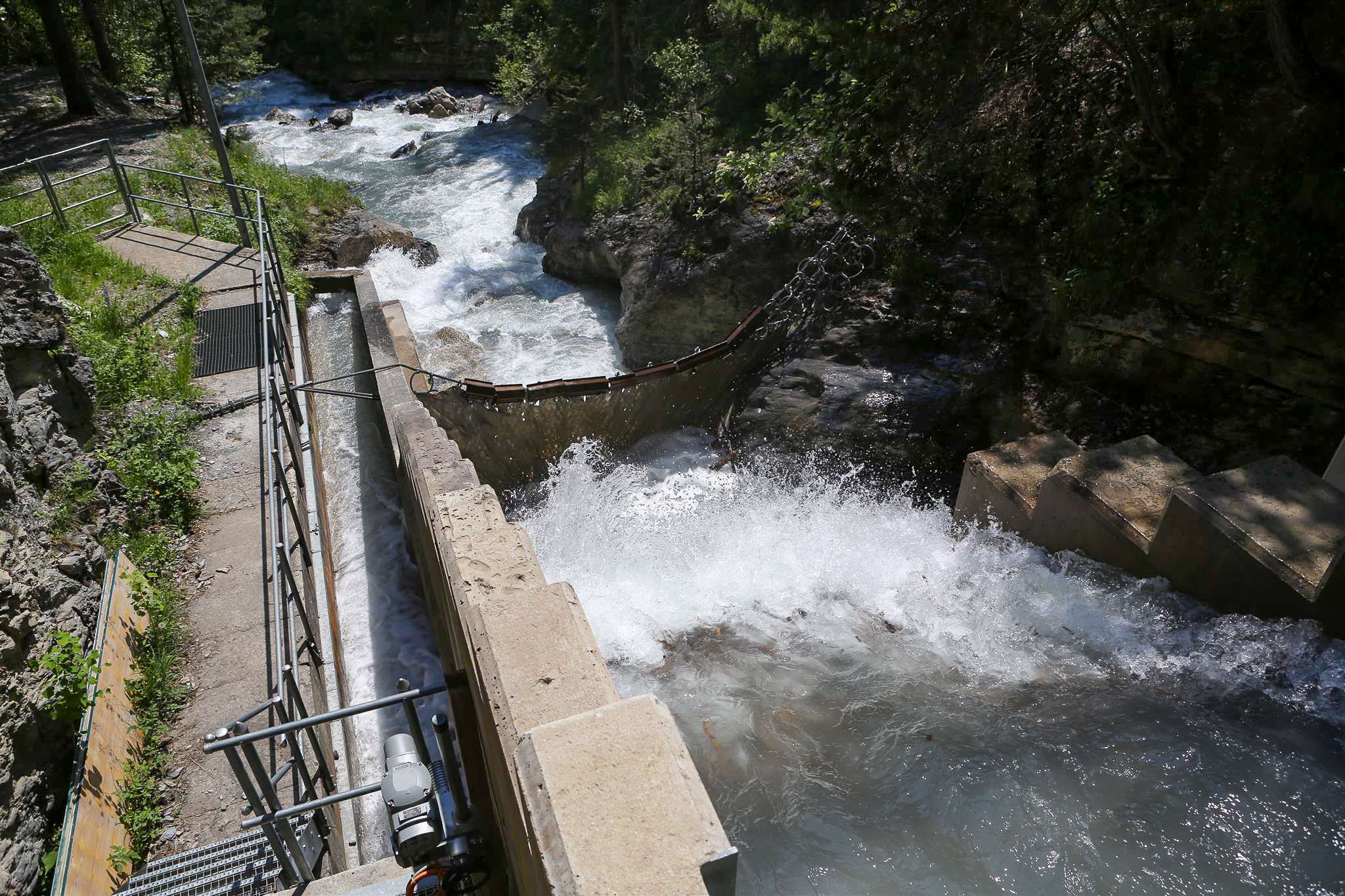
Building an artificial lake in the lowlands to collect unused water from the Raspille is not an option. Too large an area would be required, Glenz explains. It would take a reservoir the size of a soccer field and five metres deep just to meet the water needs of the Salgesch vineyards for a single day.
Instead, the idea is to store water in the existing Tseuzier reservoir, whose dam is located at an elevation of 1,780m and has been in operation since 1957.
Storing snowmelt water at high altitude
The Lienne-Raspille project envisages the construction of an underground pipeline network to collect snowmelt water in the spring and store it in Lake Tseuzier. The water will then be piped to the fields for irrigation in the summer. A multifunctional reservoir to produce electricity and to irrigate fields would be a first in Switzerland, says Gilles Florey, the mayor of Salgesch.
Unlike most dams in the world, Swiss dams have been designed almost exclusively for hydropower production. According to the World Register of DamsExternal link, 87% of Swiss reservoirs are used solely for electricity production and only 2.4% fulfill more than one purpose. In Switzerland, the multiple use of dam reservoirs “is far from being recognised as a water and energy management paradigm,” says a recently published studyExternal link by the University of Lausanne.
>> Find out more about this unique project in Switzerland:
The cost of the project is estimated at around CHF60 million ($70 million) and includes seven other municipalities. Although the project has been talked about for a decade, it is currently blocked by an objection from the World Wildlife Fund (WWF). The environmental organisation is demanding guarantees that water will be used sparingly.
“The idea of storing some water is consistent and smart – we have no objections to it,” Marie-Thérèse Sangra, regional secretary of WWF’s Valais section, told the newspaper Le NouvellisteExternal link. “However, we have doubts about how it will be used.”
The mayor of Salgesch is not worried about this. “We should come to an understanding with WWF by the end of the summer,” says Florey. Optimising water consumption and avoiding waste are among his priorities.
Automated drip irrigation in the vineyards
On the edge of the village, two plots planted with the same grape variety have been equipped with a new drip irrigation system. This releases water to the vines slowly and in a controlled manner to minimise evaporation.
Compared with sprinkler or overhead irrigation, a conventional drip system can reduce water consumption by about 20%. Such a system is installed in every third vineyard of the village. The savings are even greater with a fully automated system, such as the one tested here.
Sensors detect soil moisture and the water stress status of the vines in real time, so the water supply can be adjusted continuously. Drones fly over the vineyard and measure its cover and leaf volume.
The drawback of drip irrigation is that filters are essential in order to remove sediment or impurities in the water that could clog the dripper nozzles. In addition, the total investment for those who decide to switch to a drip irrigation system is significant. Glenz, who also a winemaker, paid close to CHF4,000 for a system to irrigate his 2,000m² plot of land.
Less water thanks to technology
An even more innovative technology for reducing water consumption is being tried out in one of the two test plots. Before falling to the ground, water is exposed to low frequency electromagnetic waves inside a special metal cylinder.
This device was developed by the Valais-based company Aqua4D and is able to change some of the physical properties of water. This treatment improves the penetration of water into the soil and its absorption by plants. The device is already being used in several countries, such as almond orchards in CaliforniaExternal link that depend on snowmelt from the Sierra Nevada Mountain range.
“It’s not just California or arid countries such as Australia, Chile or South Africa that need such technologies,” says Eric Valette, co-founder of Aqua4D. Because of the historic drought of 2022, he explains, countries that have never faced water scarcity before are now becoming aware of the problem. “The Salgesch project is very important because it can serve as a reference for those regions in the world that are likely to face water supply difficulties in the future,” Valette says.
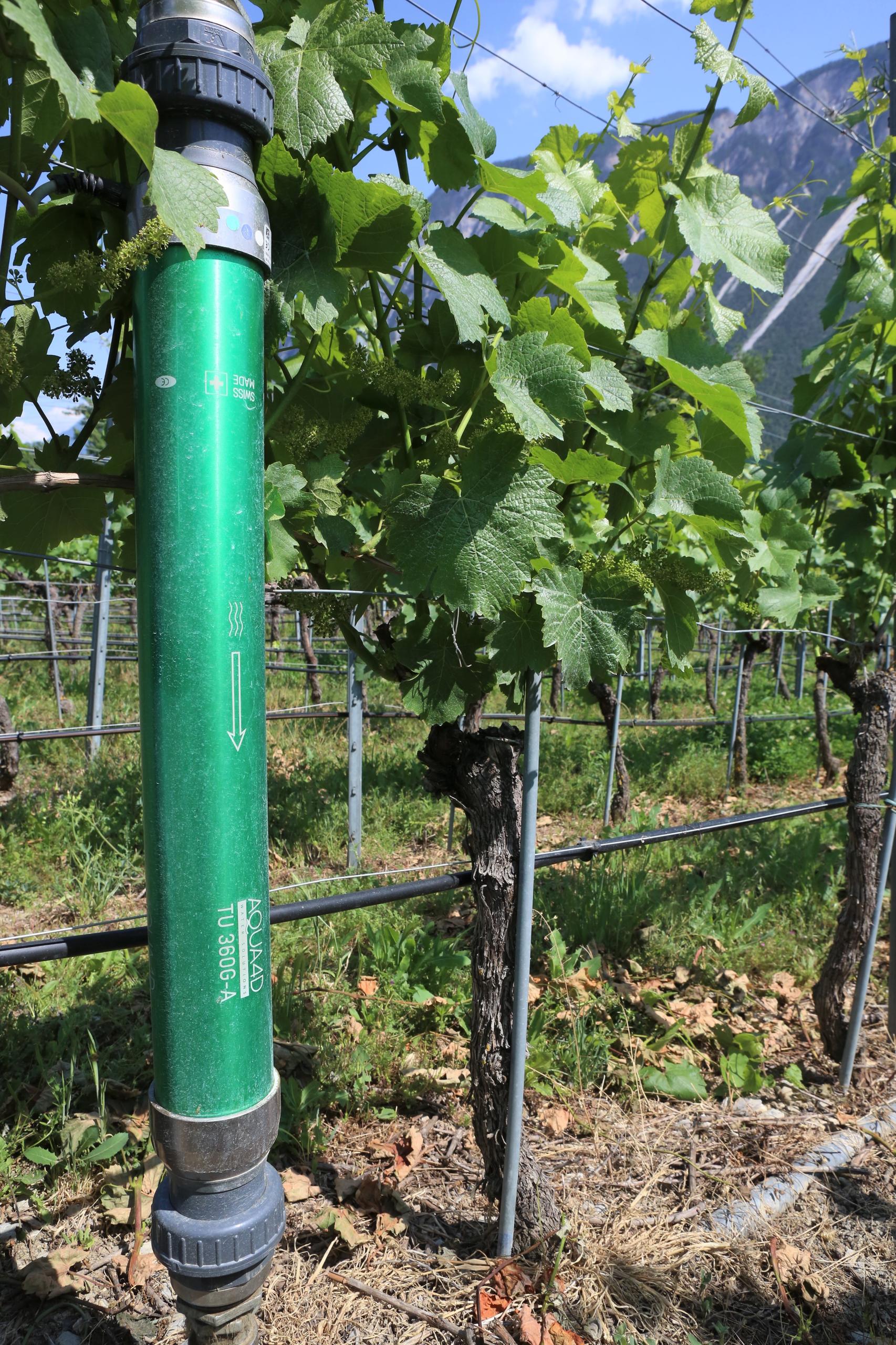
The Salgesch trial began in the summer of 2022, thanks in part to financial support from the federal authorities and a cash prize awarded by electricity provider AlpiqExternal link. It is part of a larger project to renovate the municipality’s entire irrigation system, which dates back to the 1980s.
The harvest is good – how about the wine?
Early results are promising, says Glenz. The plot equipped with Aqua4D technology, which received 20% less water, produced a harvest that matches the quality and quantity of the reference plot. “This means that we can get good yields even with less water,” he says.
It is still too early to draw conclusions and know whether the wine is also as good. The project will now run for a second year to determine which results are due to the devices and which have been influenced by weather conditions.
If the project continues to show positive results, every vineyard in the municipality and the canton could be equipped with automated drip irrigation and Aqua4D technology, saving more than 40% of water, says the mayor, Gilles Florey.
“I don’t know of many other solutions that can reduce water consumption as much as this one,” he says.
Edited by Sabrina Weiss. Translated from the Italian.

In compliance with the JTI standards
More: SWI swissinfo.ch certified by the Journalism Trust Initiative


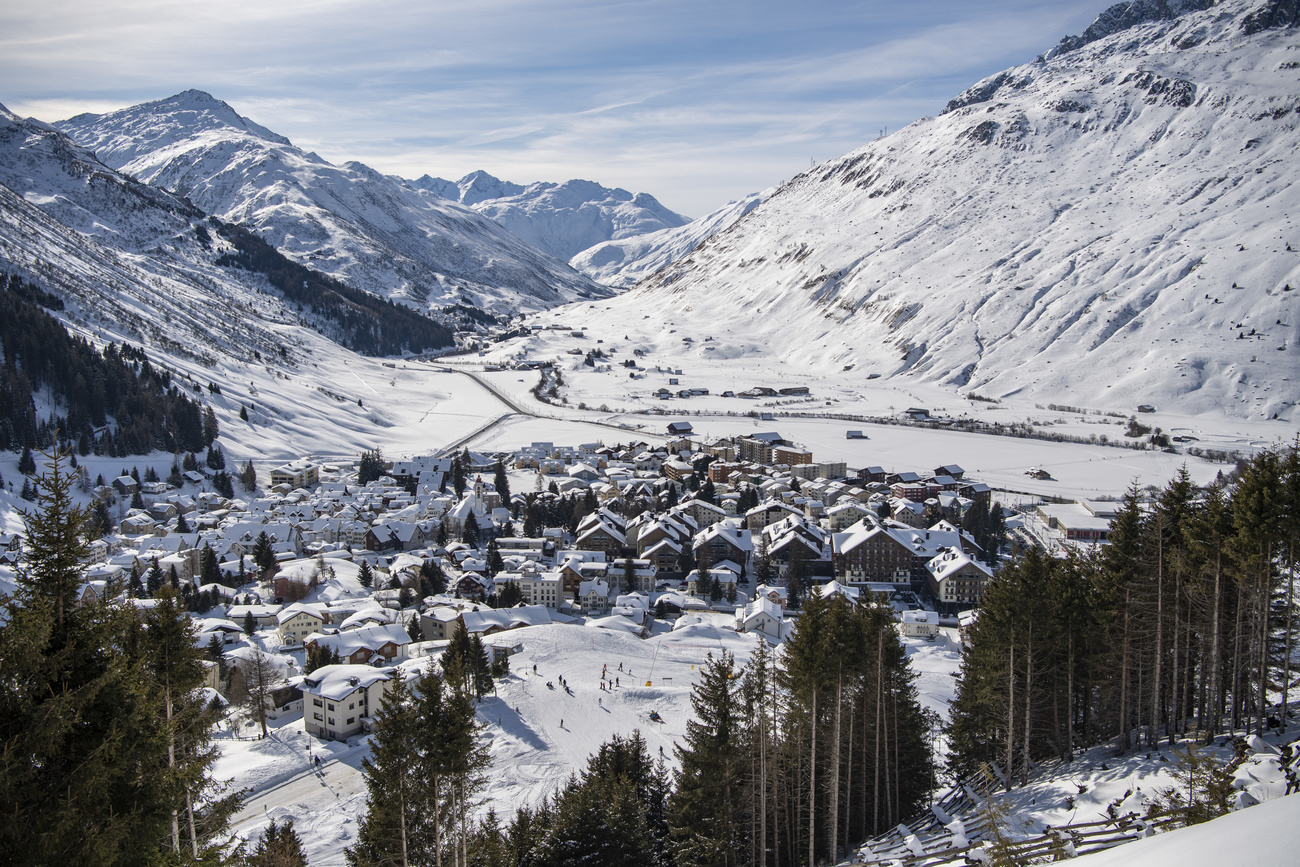
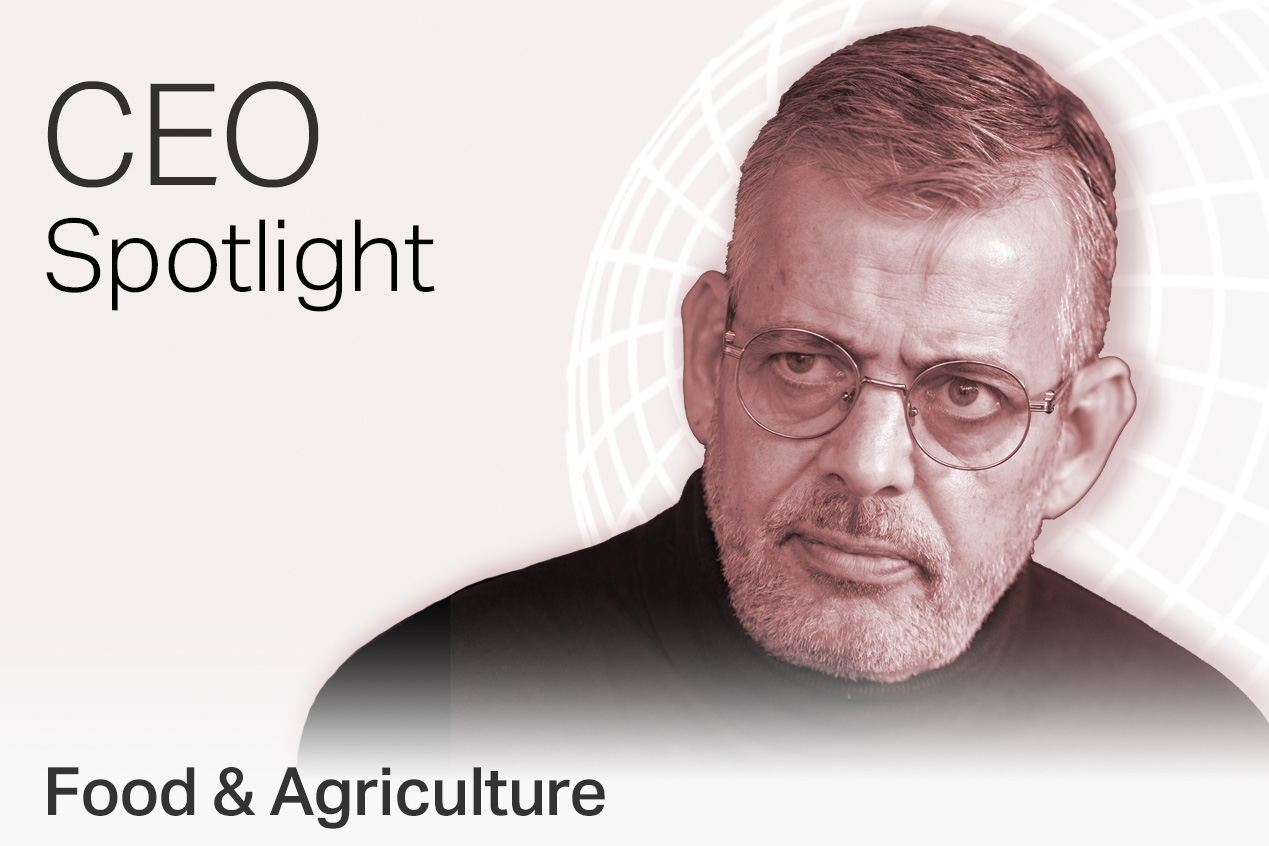

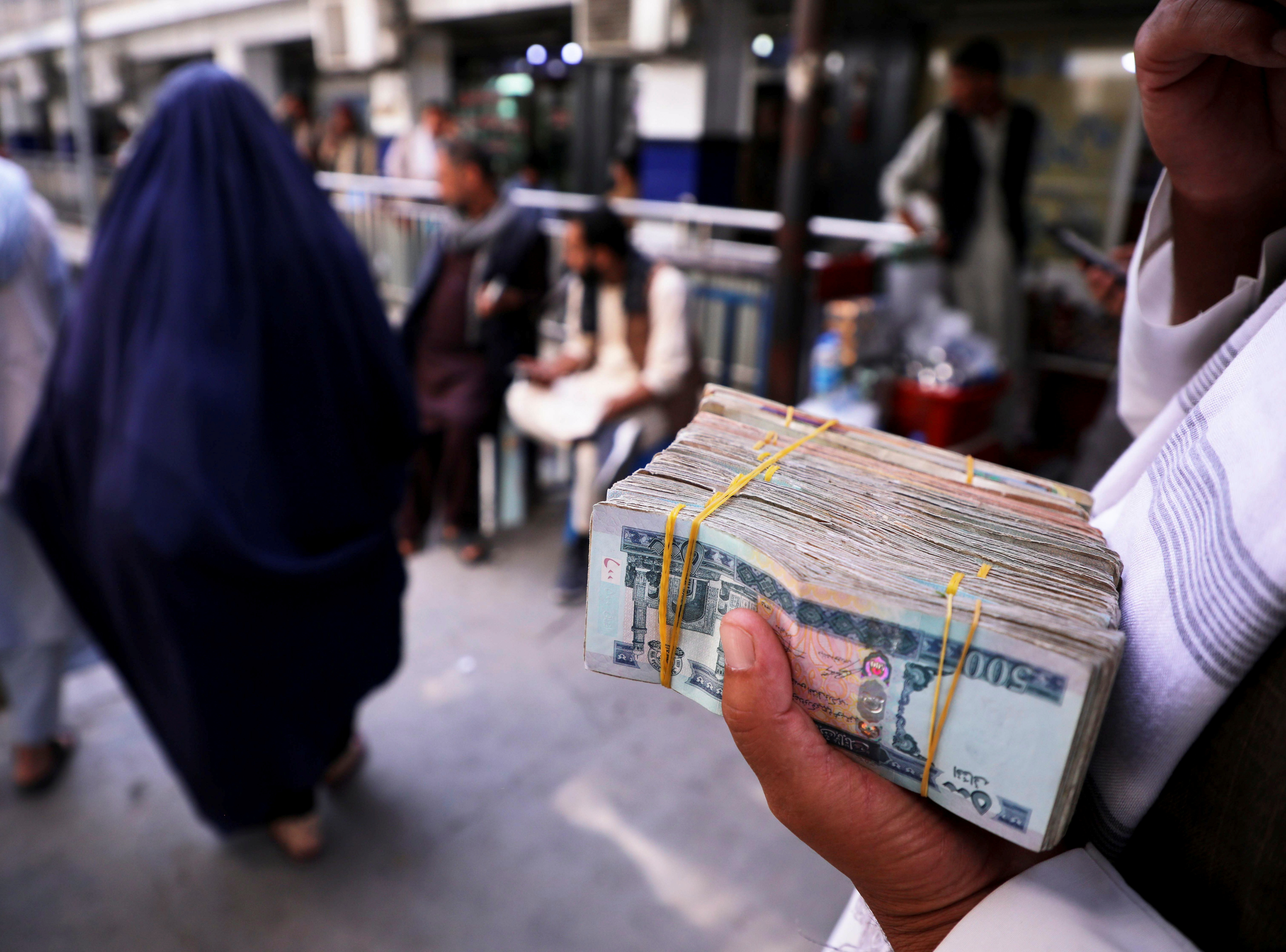



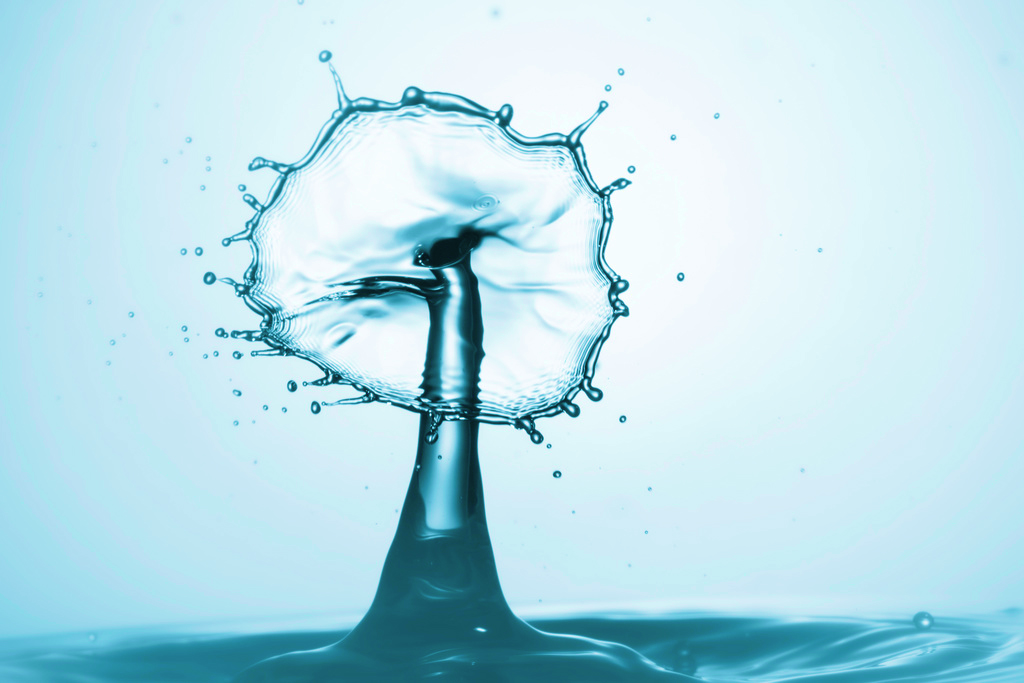
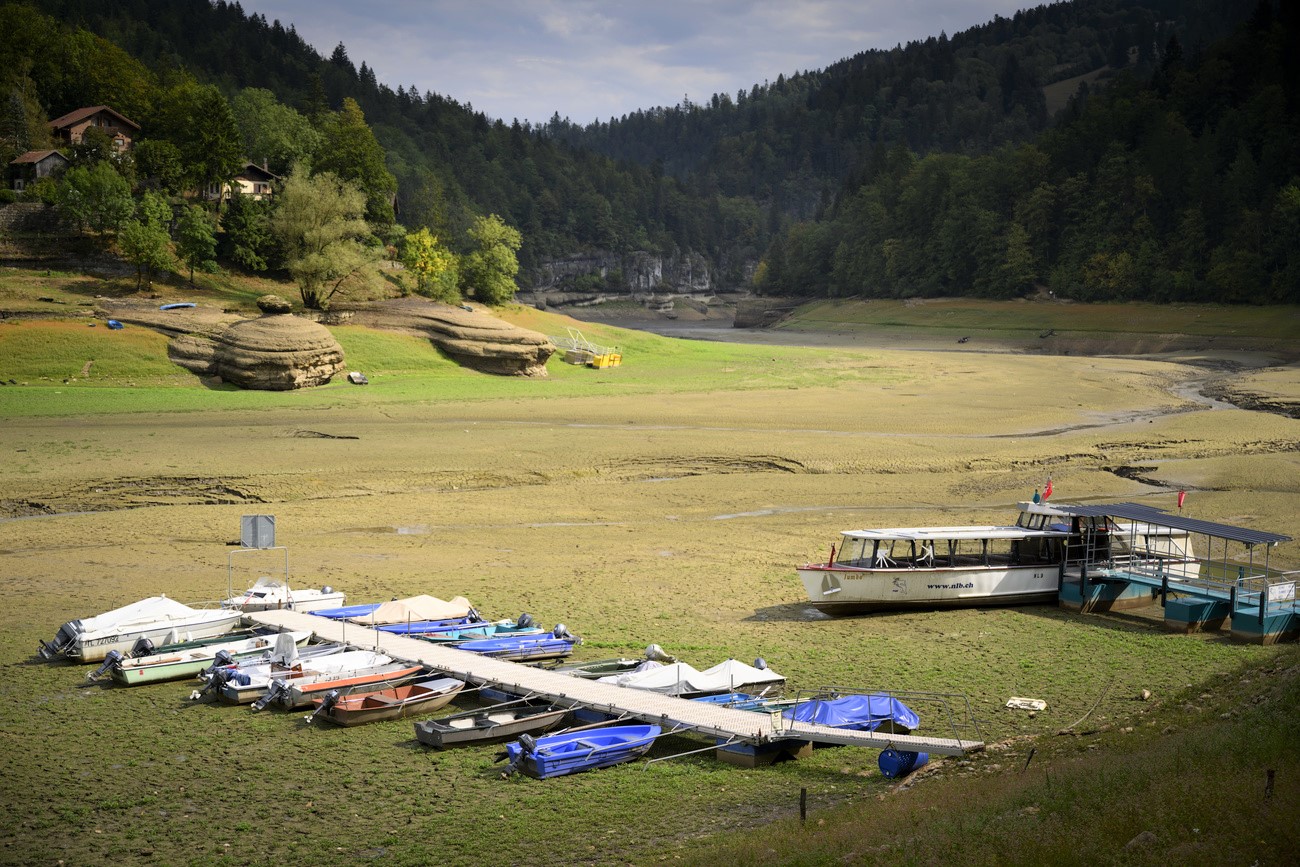
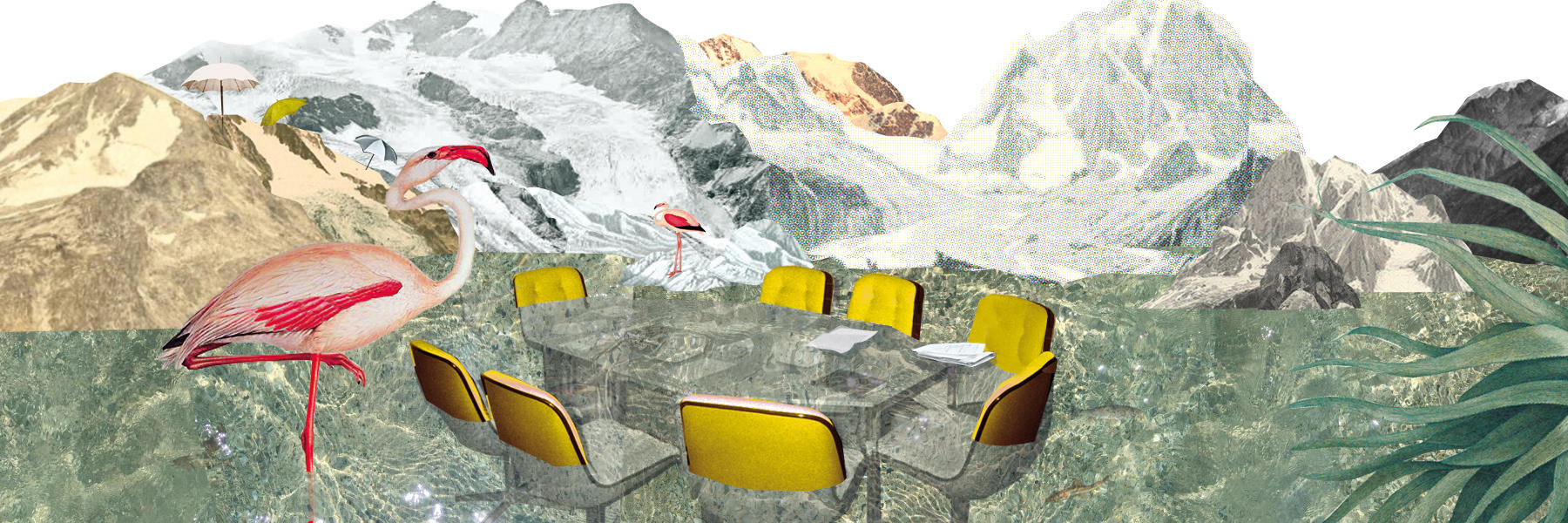
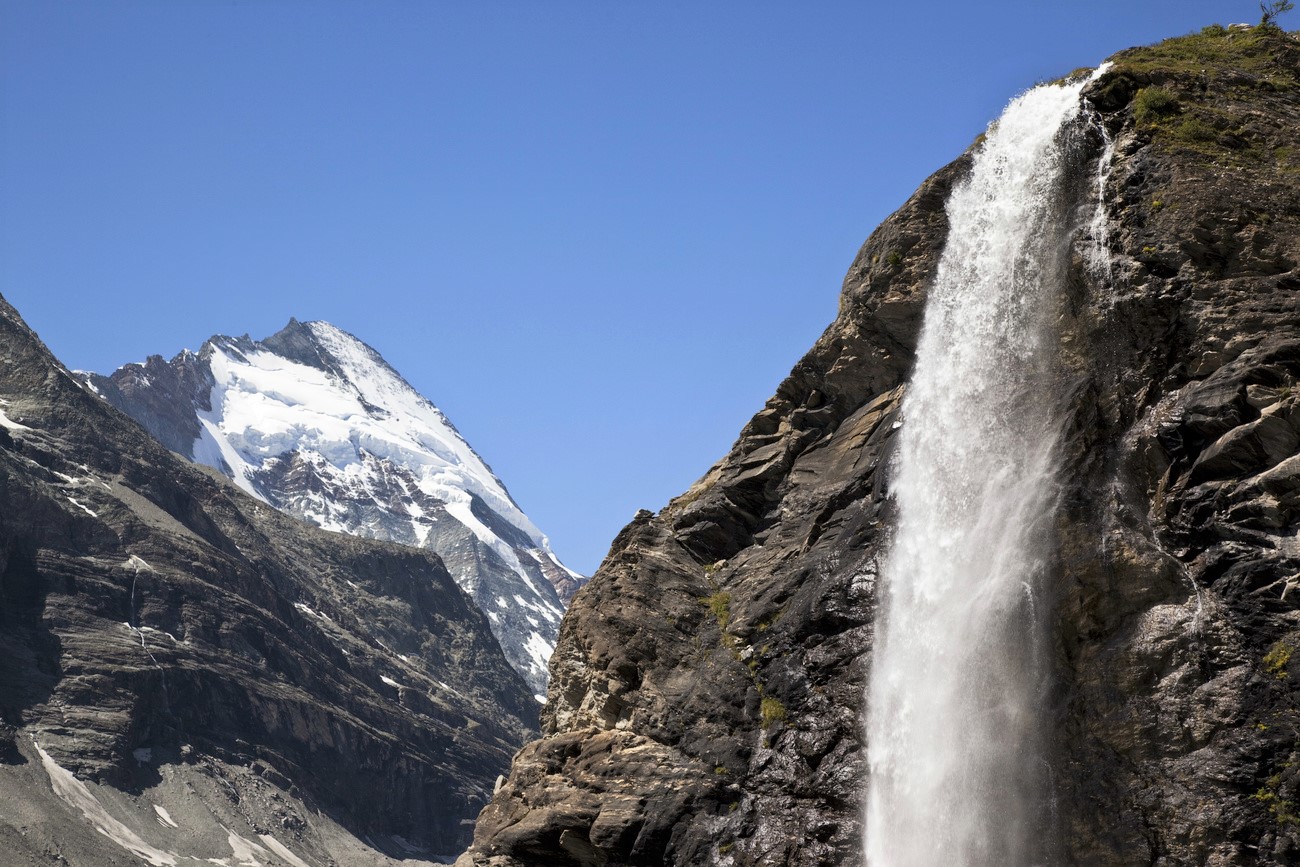
You can find an overview of ongoing debates with our journalists here . Please join us!
If you want to start a conversation about a topic raised in this article or want to report factual errors, email us at english@swissinfo.ch.